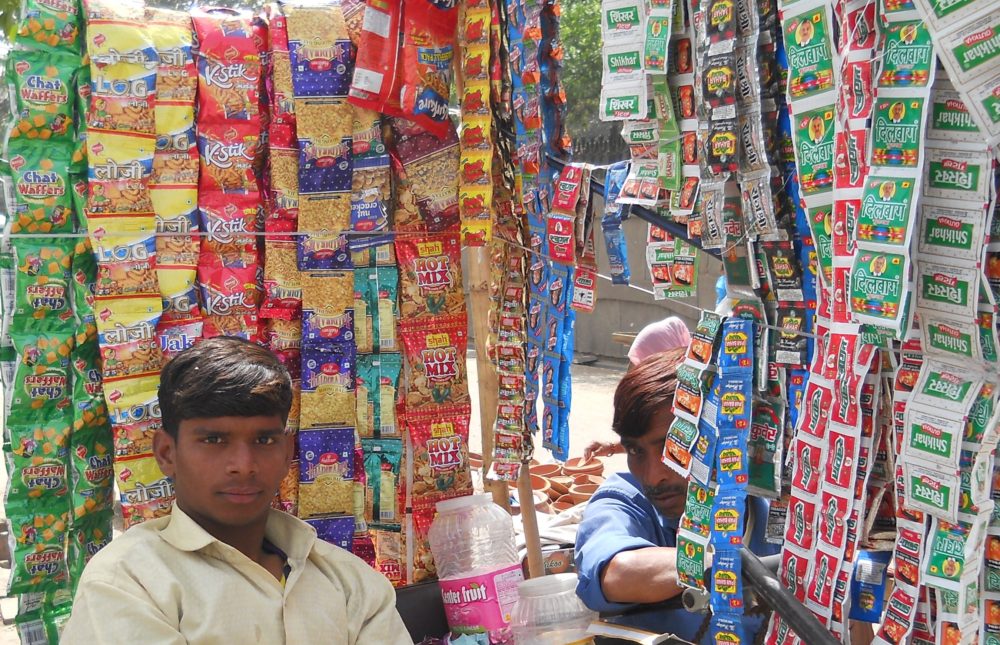By Neena Bhandari
Bruce Neal had been working on his doctorate on cardiovascular disease with the George Institute’s co-founder, Stephen MacMahon, in Auckland. It was 1999, Stephen and Robyn Norton were contemplating setting up an Institute focusing on the health consequences of chronic diseases in low and middle-income countries, and invited him to join.
“It was a novel idea to set up an Institute to address cardiovascular diseases and injuries in low-middle income settings. Until that time almost all the big international research institutes working in low- and middle-income countries focused on maternal and child health. So, I seized the opportunity and moved to Sydney”, says Professor Neal, who was born in the port city of Aden in Yemen. He studied medicine at Bristol University in England and worked for four years in the United Kingdom’s National Health Service before moving to New Zealand to begin a research career.
It is the excitement and the challenge of doing something new every day that drives his passion for medical research, along with the opportunity to work with diverse sets of people from all around the world. He is currently the Deputy Executive Director of the George Institute Australia, Professor of Medicine at the University of New South Wales in Sydney and Professor of Clinical Epidemiology at Imperial College, London.
INITIAL CHALLENGES IN INDIA: Coming from England, the first challenge for Professor Neal was just trying to figure out how India works. It took him a while to figure out how things get done. He says, “One had to socialise, get to know people and build the relationships in a way that one wouldn’t necessarily have to do in the United States, Europe or Australia. And then there is the challenge of operational practicalities, just getting to places – getting on the plane, on the train and then into a rickshaw to reach the villages where we were working. If we wanted to do a survey, that meant we had to put up marquees, hire generators, provide food. Things one just wouldn’t think about having to do in a developed country. Other challenges for the team were understanding how to set up a not-for-profit business within the Indian system, and how to build relationships with academics, government and civil society from afar. It was a big learning curve”.
He recalls the tremendous hospitality during his first trip to the villages in Bhimavaram in West Godavari District of Andhra Pradesh. “We went overnight on the train and then we were taken to our local host’s house, who offered us a very nice traditional South Indian breakfast. And then my very considerate collaborator from Hyderabad opened his suitcase and brought out a packet of English breakfast cereal and milk in case I couldn’t cope with the spices. I ate both, but actually quite liked the home-cooked Indian breakfast”.
JOURNEY OF A DECADE: “Today, the institute is well established and recognised, both nationally and internationally, as an important research entity in India”, says Professor Neal, whose current work is focusing on food supply and what can be done to stop the population from falling prey to the problems of obesity, diabetes and chronic diseases caused by a diet of sugary drinks, high salt, and fatty foods.
He says, “It is fascinating talking to, for example, sugary drinks’ manufacturers in India as against those in Australia. On suggesting there might be a problem brewing in India, the response was `No! The Indian population needs energy and calories. The sugar in drinks is good’. The perspectives on some major health issues are poles apart. To change that mindset, it will take time and that’s why we’re committed to a sustained program of work that will need to continue for decades. Just as in the west, it’s going to take a long time for the messages to get through”.
The Institute is working on culturally appropriate ways to deliver the message. The international FoodSwitch program collects detailed information off the labels of packaged and processed foods and feeds that information to a smartphone app. The App lets people scan the barcode of products, see how healthy or unhealthy the product is with simple on-screen visuals, and receive suggestions about alternative healthier products to buy instead. Reflecting the preference of many Indians for avoiding meat products, everything in FoodSwitch India is marked as vegetarian or not.
The Institute simultaneously approaches the government with analyses from the FoodSwitch database highlighting issues such as the quality of food labelling – high levels of non-compliance with existing food labelling requirements and inadequate information about salt, sugar and harmful fat make a strong case for a better food labelling and enforcement strategy. There are some states and territories in India, which are particularly progressive and may be willing to lead the way, allowing the Institute to do pilot projects that demonstrate what might be possible before scaling for maximum impact.
The data is also shared with food companies. “This has recently been done with a Bill and Melinda Gates Foundation-funded program called the Access To Nutrition Index. For the 10 leading food manufacturers in India we compared how they ranked in terms of the nutritional quality of the products sold. It’s a nice example of how we can highlight the good and the bad in the food system and bring pressure to bear on companies with particularly unhealthy product portfolios”, explains Professor Neal.
INDIAN COOKING STYLE: For many in India, packaged food is only a small part of the diet, but home-cooked snacks and sweets usually have big helpings of salt and sugar. He says, “Without the advertising budget of big business, it’s a real challenge influencing people’s cooking habits. People in India are progressively switching from a culture of preparing food at home with fresh ingredients to consumption of pre-packaged noodles, sauces and the like. This is particularly so in urban areas, but it is happening in rural parts of the country too. We are trying to get ahead of the game by documenting this trend from the start and looking now for ways to ameliorate the harms that are likely to be caused by the transition to processed foods.
“If we can intervene at an early stage we hope that we can find novel ways to stop the transition to more packaged and restaurant foods causing the same epidemic of obesity and chronic disease we have seen in Australia. There’s a huge number of companies that are producing these goods in India so finding practical ways of influencing them is a big part of the challenge. But the potential impact of even small changes to the food supply 10 years down the line is enormous so its a real priority”, adds Professor Neal, who has been working in India since the 1990s, mostly on clinical trials of treatments for diabetes.
“One of our first projects in India was focused on the treatment of diabetes and it was done in the clinical setting working with some of India’s leading hospitals. As a consequence of this work we were approached by a local Foundation who wanted to implement healthcare programs in rural areas of East and West Godavari regions of Andhra Pradesh. We built a new collaboration with that group and began surveys that would define what these populations were dying from and what the risk factors were. To our surprise, we found that strokes and heart attacks were already the leading causes of death in these villages, that many people were overweight and there was a really high prevalence of diabetes. This gave us the impetus to kick off what we now have, a really substantial program of research examining ways of providing chronic disease care in a simple, low-cost way that can be scaled into resource-poor settings for disadvantaged communities”, he explains.
THE WAY FORWARD: Professor Neal feels the Institute can be a hub for collaboration between Australia, the US, the UK and many other developed countries who have got significant resources to invest in health research in India. It should seek to grow the strength of its local academics and expertise and that in turn will snowball the opportunities and the impact that the institute can have. It should continue to work with the end-users, be they rural communities, the food industry, local or federal government. A real focus on end-user-oriented research will be the key.
The Institute benefits from a multidisciplinary approach involving people from diverse disciplines – medical and nutrition backgrounds, food retail and manufacturing, fast-moving consumer goods, supply chain logistics as well as lawyers and economists – which provides for novel insights and solutions. “How we eat, how companies are allowed to sell us foods and how companies manufacture foods, are governed by the policies and the legal system laid out by governments. As medical researchers, we have very little insight into how this works, so having lawyers with a comprehensive understanding of the system and how one might be able to use it for public health is really powerful in terms of change’’.
Again, technology makes it possible to try and improve health in novel ways. “Health is very much thought about as a personal issue determined by individuals’ actions. But in practice, people are heavily influenced by the environment they live in. We’re trying to also make it a corporate issue by having food companies improve the food environment. Making it easier for people to do the right thing by having every company competing to have a healthier product portfolio to secures its place in the market. We need to be working on the companies at least as hard as on the population. If we just focus on educating and informing the population, we’re are going to lose because the companies have a thousand times more resources than we will ever have,” he concludes.
Note: This interview is part of the 10th anniversary of The George Institute for Global Health in India booklet.
© Copyright Neena Bhandari. All rights reserved. Republication, copying or using information from neenabhandari.com content is expressly prohibited without the permission of the writer and the media outlet syndicating or publishing the article.


